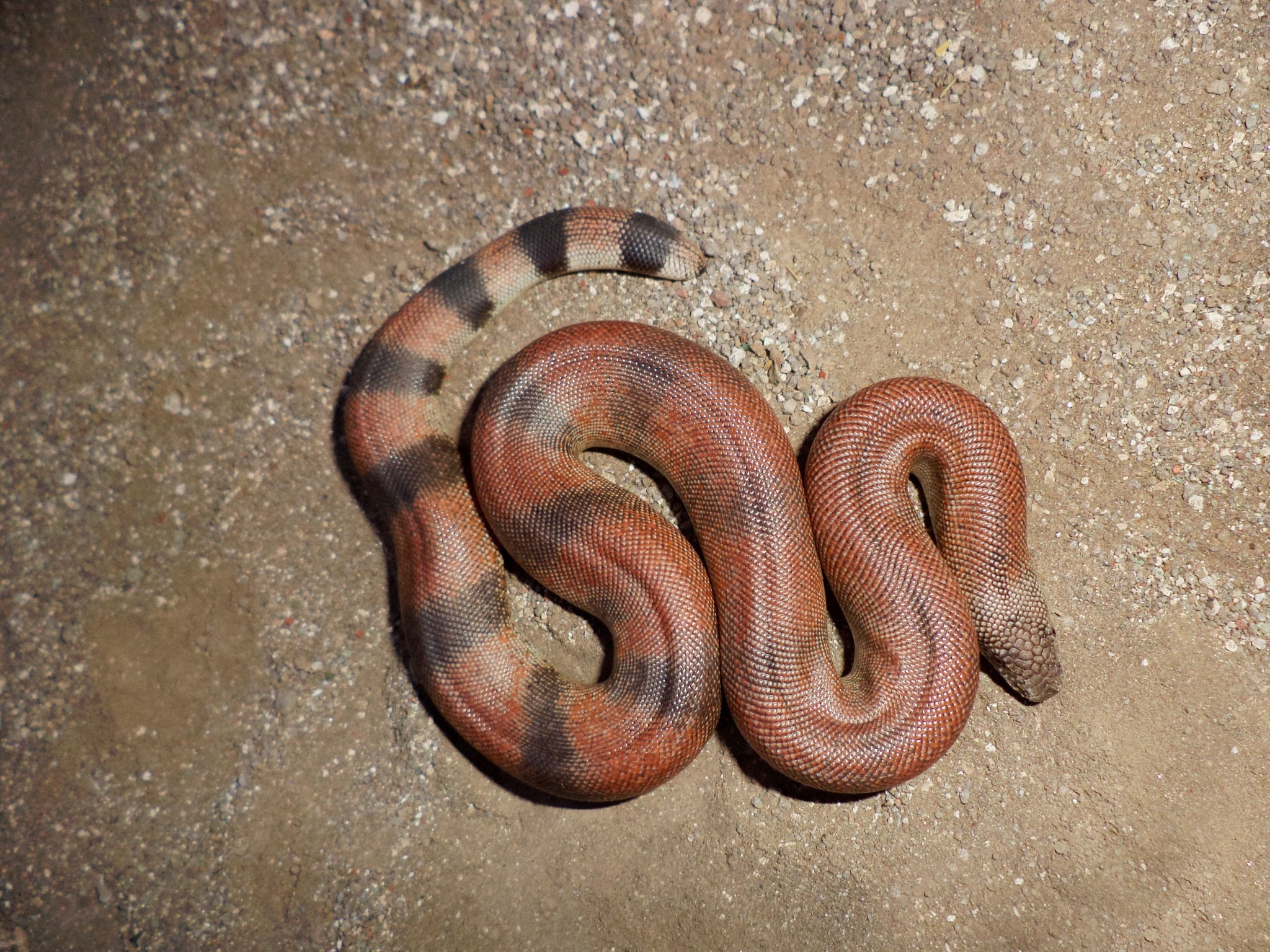Free Courses Sale ends Soon, Get It Now


Free Courses Sale ends Soon, Get It Now



Disclaimer: Copyright infringement not intended.
Context
Details
Key findings and insights from the report
Incidents of Illegal Trade
Distribution of Incidents
Conservation Status
Reasons for Illegal Trade
Role of Social Media
Conservation Recommendations
Red Sand Boa (Eryx johnii) - A Comprehensive Overview
Physical Characteristics
Size: Red Sand Boas are relatively small snakes, with adult lengths typically ranging between 40 to 60 centimeters (16 to 24 inches), although some individuals can grow slightly larger.
Coloration: As the name suggests, these boas exhibit a reddish-brown to pale pink coloration on their upper side, which helps them blend into their sandy habitats. They have a lighter belly and a distinct contrast between the dorsal and ventral colors.
Body Shape: Red Sand Boas have a robust, cylindrical body with a short, stubby tail. They have smooth scales and a slightly flattened head.
Eyes and Nostrils: These boas possess small, prominent eyes with vertical pupils. They also have nostrils that are positioned on the top of their snout, allowing them to breathe while partially buried in sand.
Habitat and Distribution
Red Sand Boas are primarily found in arid and semi-arid regions. They prefer habitats with loose, sandy soil that allows them to burrow effectively. These snakes are commonly found in areas with scrublands, deserts, and rocky terrains.
Behavior and Diet
Burrowing: Red Sand Boas are well-adapted to their subterranean lifestyle. They are excellent burrowers, using their specialized head shape and strong body to create tunnels in loose sand. These burrows provide them protection from extreme temperatures and predators.
Nocturnal: These snakes are predominantly nocturnal, meaning they are most active during the night. They emerge from their burrows in search of prey and to regulate their body temperature.
Diet: Red Sand Boas are carnivorous and primarily feed on small mammals like rodents, as well as birds and their eggs. They are known to ambush their prey from their burrows and use constriction to subdue it.
Reproduction
Red Sand Boas are ovoviviparous, meaning that they give birth to live young instead of laying eggs. After a gestation period of several months, the female gives birth to a small number of offspring, usually between 2 to 10, depending on factors like the female's size and health.
Conclusion
The WCS-India report underscores the urgent need for stronger enforcement and conservation efforts to combat the illegal trade of Red Sand Boas. Given their status as a 'Near Threatened' species and their significant presence in illegal trade markets, collaborative actions are necessary to curb this illicit trade and protect the species from further population declines.
|
PRACTICE QUESTION Q. Which of the following statements about the Red Sand Boa (Eryx johnii) is/are correct? 1.The Red Sand Boa is a venomous snake species found in tropical rainforests. 2.Red Sand Boas are known for their bright red coloration, which serves as a warning signal. 3.The Red Sand Boa is a non-venomous snake that is often mistaken for a venomous snake due to its appearance. 4.Red Sand Boas are active during the day and can be frequently seen basking in the sun. Options: A. 1 and 2 only B. 3 only C. 2 and 4 only D. 3 and 4 only Answer: B |
© 2024 iasgyan. All right reserved